Knobbed Cylinders are the first visual sense lesson within the Sensorial area of the classroom. To introduce the work, invite the child to the Sensorial area and identify the material, “These are the knobbed cylinders.”

What are Montessori Cylinder Blocks?
Montessori cylinder blocks are a unique learning tool that has been widely used in early childhood education for decades. These blocks, which come in various sizes and shapes, are designed to help children develop their spatial reasoning, hand-eye coordination, and problem-solving skills.
The Montessori approach emphasizes hands-on learning, and these blocks are a prime example of that philosophy. They provide children with the opportunity to experience shapes and dimensions in a tangible way, which can help them build strong mental images and develop their analytical abilities.
With the cylinder blocks, children can experiment with different combinations, compare sizes, and learn to categorize shapes based on their similarities and differences.
These simple yet effective blocks are a valuable and enjoyable way for children to explore mathematical concepts and develop essential cognitive skills.
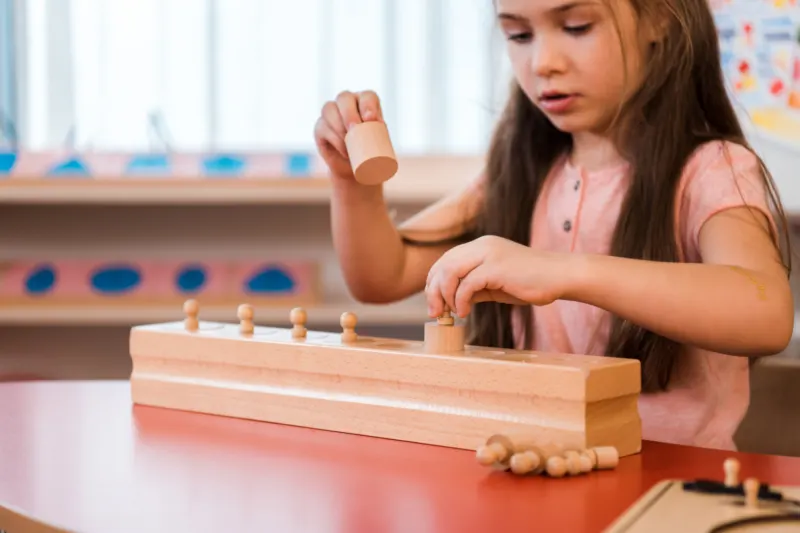
What is the Purpose of Knobbed Cylinders in Montessori?
The purpose of knobbed cylinders in Montessori education is to refine a child’s visual discrimination and spatial awareness skills. The knobbed cylinder activity is part of the sensorial materials in the Montessori curriculum and focuses on developing a child’s ability to differentiate and match sizes and dimensions.
A Look at Montessori’s Knobbed Cylinders
The knobbed cylinders consist of a set of wooden cylinders varying in height and diameter, each with a knob attached to the top. The cylinders fit into corresponding holes on a wooden base. The objective of the activity is for the child to match the cylinders with the correct holes based on size and dimensions.
There are four different blocks of knobbed cylinders. Block 1 varies in height and diameter, and the tallest is also the widest. Block 2 varies in diameter. Block 3 varies in height and diameter, and the tallest has the smallest diameter. Block 4 varies in height.
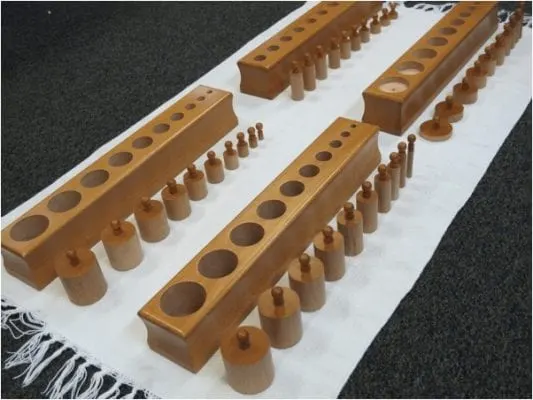
What Age Do You Get Montessori Knobbed Cylinders?
In Montessori education, the knobbed cylinders are typically introduced to children around the age of 3 to 3.5 years, depending on the child’s individual development and readiness. This age range aligns with the sensitive period for visual discrimination and fine motor skills, during which children are particularly receptive to activities that refine their senses and coordination.
How to Use Knobbed Cylinders
To handle the knobbed cylinders, grasp the wooden block with your thumb, against the side facing you, and place your three middle fingers on the opposite side. The little finger acts as a cushion when you set it down.
Set it down slowly and carefully within the child’s field of vision. Using the 3-finger grip, grasp onto the first knob and slowly bring it out of the socket. Pause for a moment once the cylinder clears the socket.
Knobbed Cylinder Presentations
Like most Sensorial works, there are several presentations on the Knobbed Cylinders.
Knobbed Cylinders – Presentation I
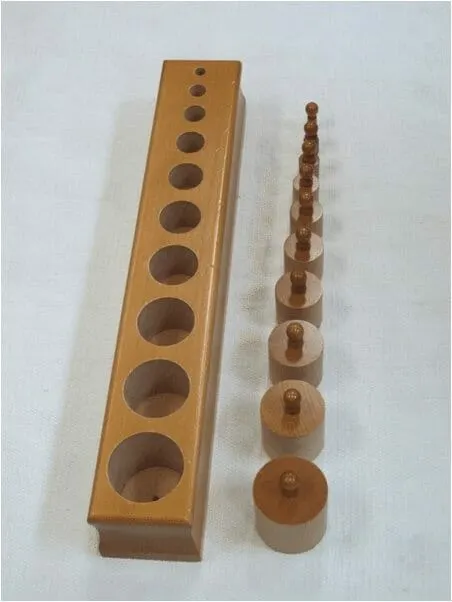
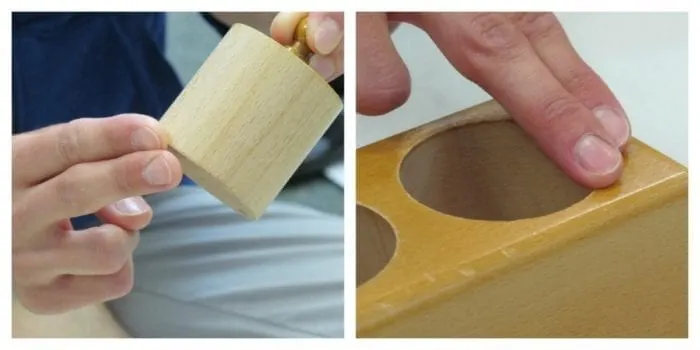
Lift all the cylinders out of their sockets and line them up in order on the table in front of the block. Be sure to make eye contact with the child often and pause.
Pick up the first cylinder that was removed from the block. Trace around the base with the index and third fingers. Using the same fingers trace around the edge of the socket opening (for the smallest cylinder, use only your index finger). Slowly lower the cylinder into its socket with one edge slightly lower than the others so that it slips into the socket first.
Repeat with other cylinders, then run index and third fingers across the cylinder tops and the block to make sure all the blocks are in properly.
Offer the child a turn.
Knobbed Cylinders – Presentation II
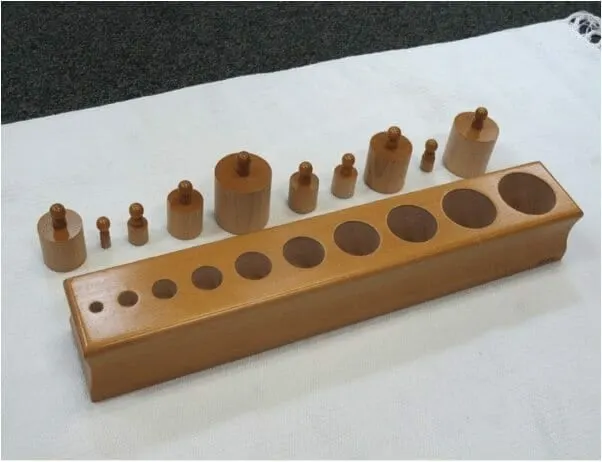
Cylinders come out of the block in a similar manner, but they are placed randomly in front of the block.
Study the block and show the child the empty sockets. Trace the empty socket on the left. Search for the cylinder that fits, trace its base, and trace the socket again.
Continue with the remaining cylinders
Knobbed Cylinders – Presentation III and Beyond
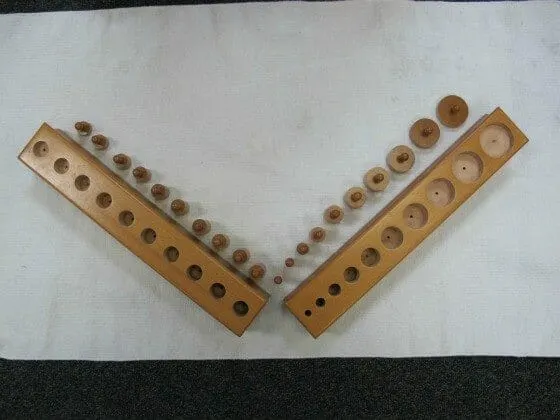
Two blocks in a “V” shape
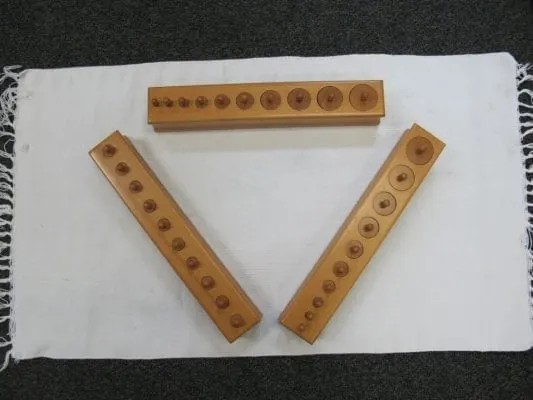
Three blocks in a triangle formation
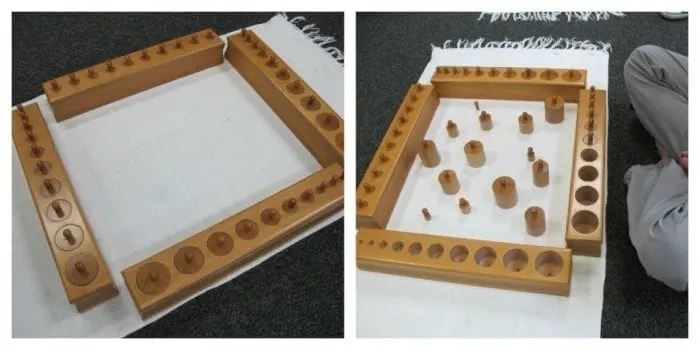
All four blocks in a square formation
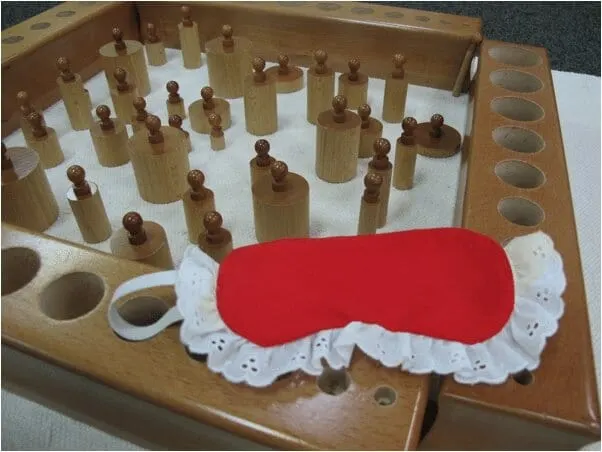
For an extension, have the child try the exercise blindfolded.
Thank you for stopping by today! Please leave me a comment! I love hearing from you!
Marnie

